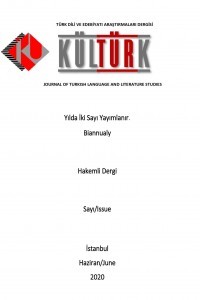
KÜLTÜRK
Yazarlar: ["Mehmet AÇA"]
Konular:-
Anahtar Kelimeler:Seyydi Battal Gazi destanı,Gaziz Gobeydullin,Şura dergisi,Türk-Tatar edebiyatı,Stalin zulmü
Özet: Gaziz Gobeydullin is a prominent figure not only for his works on history but also for his works on literature, religion, philosophy, nationality and national spirit. Gobeydullin, who was among the scientists invited to Baku by Neriman Nerimanov for the preparation of national cadres to govern the state, had a Turkic unityist worldview and paid the price for this by being shot in Baku on October 13, 1937 together with Khalid Seyid Khojayev and Bekir Sıtlı Çobanzade. Gobeydullin studied at the Faculty of History-Philology of Kazan University under the supervision of Khakas Turk Turk Turcologists N. F. Katanov and N. N. Firsov and made important studies in the fields of history, literature, nationality and national spirit. Gobeydullin was also closely interested in Turko-Tatar folk literature and gave due importance to the place of folk literature in Turko-Tatar literature. Gobeydullin also published an independent article on the epic of Seyyid Battal Gazi. Gobeydullin became the scholar of Turkish origin who wrote the oldest scientific article on Seyyid Battal Gazi epic in the Turkic world with his article titled "In the Tugri of Seyyid Battal Gazi Story" published in the 22nd issue of Shura magazine dated 1911. Gobeyddullin's article has not been mentioned in the studies on the epic in Turkey. With this study, we aimed to present this article of Gobeyddullin to the attention of scholars in Turkey. In the study, firstly Gobeyddullin is introduced in main outlines and then the translation of his article into Turkish is given. Before the translation into Turkish, the content and importance of Gobeydullin's article were evaluated. The original text of the article in Arabic script is given at the end of the article. Gobeydullin's approach to the epic in question, his findings and interpretations are still relevant today. Gobeydullin's article draws attention with its method, topics, interpretations and conclusions.